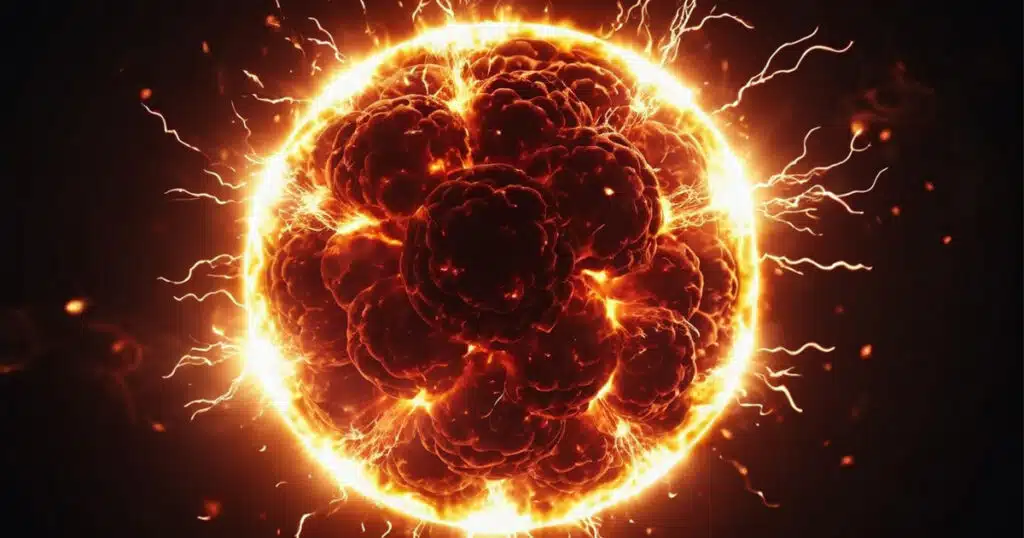
Unraveling the Nuclear Fusion Confusion
Major shifts have been taking place in the race to commercialize nuclear fusion, but one high school senior has shaken the fusion world by building a nuclear fusion reactor as a high school science project.
Cesare Mencarini, an Italian studying in the United Kingdom, taught himself to code and how to work with electrical systems. He searched YouTube and the Internet and built a custom-made reactor that was controlled and hosted from a Raspberry Pi system. His reactor achieved plasma, the fourth state of matter, a crucial step in the fusion process, by effectively using high voltage to heat atoms to the required temperatures.
His work has earned him a college scholarship, where he will be working on larger reactors. Mencarini explains that “I had to adapt the design to fit in with the budget and my aim is to encourage other young people to develop ideas and think about how we can improve our world and be innovative.”
Mencarini’s success should be an inspiration to the thousands of scientists affiliated with the European Organization for Nuclear Research (CERN), where, in the wake of the Russian invasion of Ukraine, the CERN Council in June 2022 decided to end cooperation with Russia, affecting 500 scientists affiliated with Russian institutions.
While about 100 of the Russian-affiliated scientists have found other sponsorship and will continue working with CERN, the Russian government withdrew US$46.8 million from the financing of the upgrading of CERN’s large hadron collider and will no longer supply 4.6% of the LHC’s experimental budget.
On another front, CERN last November signed an agreement with members of EUROfusion, a European consortium of fusion research laboratories, to facilitate collaboration on development of innovative technologies for future colliders and nuclear fusion reactors. EUROfusion’s laboratories are creating a technical design of a fusion demonstration power plant (DEMO) to succeed ITER (the International Fusion Reactor).
ITER, one may recall, was launched in 1985 by a consortium including China, India, Japan, Korea, Russia, the United States, and the European Union and supported by the European Atomic Energy Community (which itself was created by the Euratom Treaty in 1957). Its mission was to bring fusion to a point where a demonstration fusion reactor could be designed.
Construction of the ITER tokamak began in 2010, and in May 200 the 1,250-tonne cryostat base was installed at the 42-hectare site. The latest news from ITER is a plan to build a more complete machine than was initially planned, with achievement of full magnetic energy by 2036 and the start of the deuterium-tritium operation phase by 2039. Expect new information at the ITER Council meeting this November.
While the European efforts are slowing down, the hunt for nuclear fusion is escalating in the United States, and notably in Wisconsin.
At the National Ignition Facility in Livermore, California, a significant advancement in fusion ignition was achieved in December 2022 using 192 lasers concentrated on a minuscule gold cylinder consisting of a diamond capsule loaded with deuterium and tritium. At one moment, hydrogen atoms integrated into helium, emitting energy of 3.15Mj that exceeded the 2.05Mj contribution from the lasers.
The success of this experiment symbolized a model change in the nuclear energy segment. It also prompted renewed curiosity as well as financing in fusion energy, which promises practically unlimited power with no safety hazards with little if any waste issues. The challenge remains to sustain the fragile balance of conditions essential to fusion.
On another front, MIT researchers just published results of a study that addressed the problem of building tokamats that can withstand the incredibly hot plasma. Senior researcher Ju Li described the method for drawing away problematic helium atoms that can wreak havoc on the tokamak’s inner walls by dispersing iron silicate into the bulk metal.
A July survey by the Fusion Industry Association reported that among 45 private fusion companies worldwide, 25 were headquartered in the United States. Perhaps the biggest news on the U.S. fusion front is emerging from three of these firms that were spun out of the University of Wisconsin at Madison – Realta Fusion, Type One Energy, and SHINE Technologies.
On July 15, Realta Fusion scientist Elliot Claveau reported that his team had generated a beam of superheated plasma for the first time at the Wisconsin HTS Axisymmetric Mirror (WHAM) project being conducted at the University of Wisconsin Plasma Physics Laboratory in Stoughton.
WHAM was created in 2020 as a partnership between UW-Madison, MIT, and the company Commonwealth Fusion Systems, who had received $10 million in grants from the U.S. Department of Energy, as well as funding support from UW-Madison. WHAM is now operating as a public-private partnership between UW-Madison and Realta Fusion, which was spun out of the university.
Just one week later, scientists at SHINE Technologies in Janesville showcased their FLARE™, billed as the world’s most powerful continuous fusion neutron system at the IEEE Nuclear & Space Radiation Effects Conference and at the Technology of Fusion Energy Meeting (TOFE). FLARE™, an acronym for Fusion Linear Accelerator for Radiation Effects, produced 50 trillion nuclear fusion neutrons per second.
FLARE™ can complete tests in hours that heretofore took weeks. This allows for shorter development cycles and faster iteration in developing radiation-hardened components. As a result, the Department of Defense will be able to much more quickly determine how much radiation our defense systems and withstand before they are disrupted or destroyed.
The third ring came on July 30, when Wisconsin-born Type One Energy, which recently relocated to Oak Ridge, Tennessee, announced it had raised over $82 million in seed funding for a fusion prototype based on work of scientists at its Madison office. Bill Gates’ Breakthrough Energy Ventures led the extension, with Australia-based Foxglove Ventures and New Zealand-based GD1 also contributing.
Type One’s reactor is a stellarator, whose shape has been called a cronut – a circle that is warped and bulging. The shape is defined by magnets that exert the specially shaped field that confines the superheated plasma necessary for fusion reactions. The stellarator requires a tremendous amount of computing power to fine-tune the design to make it work. Type One was spun out of the University of Wisconsin, which is also operating a stellarator.
CEO Christofer Mowry says the next step is finalizing the core reactor design, then building a prototype reactor called Infinity One as well as designing a pilot reactor by 2030. According to Mowry, “When Infinity One operates and we test it, it’s actually verifying the key design aspects of the pilot plant.”
Wisconsin’s presence in the nuclear fusion industry began with the founding in 1971 of the Fusion Technology Institute at the University of Wisconsin-Madison. Realta’s Furlong says, “There’s this huge potential to marry Wisconsin’s manufacturing capabilities with its research capabilities and create this new industry which could just generate a huge economic engine for the state.”
Furlong added, “What Detroit was for the global automobile industry in the 1950s, what Houston is today in the global oil and gas sector … I can see Wisconsin being the global hub for the fusion industry in the 21st Century.” And SHINE CEO Greg Piefer says, “I think the thing we all agree on … is that an advanced society will make its energy from fusion.”
Duggan Flanakin is a senior policy analyst at the Committee For A Constructive Tomorrow who writes on a wide variety of public policy issues.
This article was originally published by RealClearEnergy and made available via RealClearWire.



